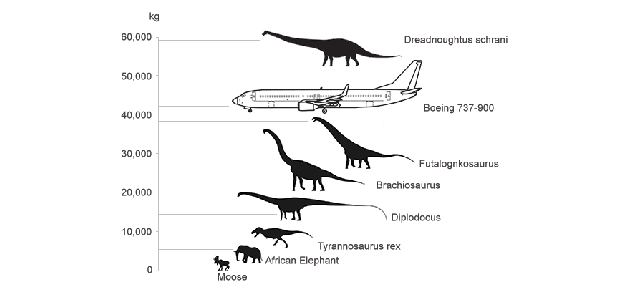----
The Mystery of the Ancient Roman Tunnel to Hell //
Mysterious Universe 
There is a place on the northern shore of the Bay of Naples that has long been steeped in history, mystery, myth, and magic. Known as the Phlegræan Fields, it is a desolate place; a barren wasteland strewn with rubble and intersected by deep underground vents that belch out choking fumes and fire. Legends and strange phenomena cling to this hellish, smoke-wreathed landscape, so it is perhaps no wonder that these fields are a location believed since ancient times to hold a tunnel that leads to Hell itself.
The Phlegræan Fields is a plateau that is part of an ancient volcanic caldera not far from Mt. Vesuvius, the volcano known for laying waste to the once great city of Pompeii. The heavily volcanic area, which is pitted with steaming vents, sulphur spewing crevasses, and even flaming holes in the ground, was well-known in Greek and Roman myth and is heavily associated with stories of magic and prophecy.

A volcanic vent on the Phlegræan Fields
One of the greatest legends originating from here is that of the Cumæan sibyl, or prophetess, that was featured in Virgil's epic the Aeneid, which tells of the hero Aeneas' journey through the Land of the Dead, guided by the Sibyl. This prophetess took her name from the nearby town of Cumae, itself having the legendary distinction of being one of the landing places for Daedalus, the mythical father of Icarus of lore. The Sibyl was depicted as a woman bestowed with immortality by the sun god Apollo and gifted with powers of prophecy, who was said to dwell in a cave somewhere in the Fields that also served as an entrance to the underworld. Her powers were described as vast, and Virgil liked to depict her sitting in her cave feverishly scrawling the future onto leaves. An interesting story concerning the Sybil is that she once possessed nine magical scrolls that allegedly outlined the entire future of Rome in detail, which she offered for an exorbitant sum to a Roman king by the name of Tarquinius Superbus, also known as Tarquin the Proud. When the king refused her offer, the Sybil proceeded to methodically destroy the scrolls until the king finally coughed up the vast amount of money she had demanded, and had the last remaining three sequestered away in a hidden place.
Although this may all seem like pure fantasy, this story is significant in that there really was a king by the name of Tarquinius and there were indeed three scrolls kept by the Greeks that came to be known as the Sibylline Books, which were thought to be the actual texts acquired by Tarquin from the Sybil. These scrolls were typically securely locked in a stone vault deep beneath a place called The Temple of Jupiter and although it is unknown if they had any real prophetic powers, the Greeks certainly thought they did, as the scrolls were said to occasionally be used to divine the future in times of imminent crisis or disaster so that such hardships could be avoided. The scrolls were considered to be of extreme importance at the time and were protected at all costs. So desperate were the Greeks to keep these scrolls that when the temple was burned down in 83 BC, envoys were allegedly sent to the far flung corners of the earth searching for any pieces or fragments that might have survived so that they could be reassembled.

The Cumæan sibyl with her prophetic scrolls.
It is these intriguing grains of truth inherent to this legend that have beckoned adventurous souls for centuries, who believed that there could possibly be a real cave where the Sybil resided and that it could really descend literally into the depths of Hell itself. The historically accurate features of the tale have also been cause for historians, archaeologists, folklorists, and scholars to wonder if there actually was, if perhaps not a literal opening to the underworld, then a previously unknown and unexplored cave or tunnel system that lies at the heart of the legends of the Sybil's cave. Various searches and expeditions of the Phlegræan Fields were undertaken over the years to discern the location of this mythical cave yet turned up nothing. In the face of the lack of any further physical evidence to point to a real cave or tunnel at the root of the legend, the possibility of one existing seemed more and more doubtful, and the Sybil's entrance to the underworld faded once again into mere myth.
The legend of the Cumæan sibyl's mysterious cave may well have remained shrouded in myth and legend forever if it weren't for a curious discovery made in the 1950s in the ancient Roman luxury resort town of Baiae, a place located in the western portion of the Fields that was once renowned throughout the Empire for its spas with reputed healing powers. Here, among the 2,000 year old ruins of this once flourishing and decadent resort, an Italian archaeologist by the name of Amedeo Maiuri stumbled across the entrance to a previously unknown tunnel complex, or antrum, painstakingly carved into the volcanic rock and leading down into a hill and beneath the city. The entrance itself was a plain, nondescript and narrow opening found concealed beneath 15 feet of rubble and vines behind a vineyard near the ruins of an ancient temple. This opening was unknown and obviously man made, so the excited team attempted to explore it. They did not get far. After delving only a few feet into the blackness of the narrow passage, it quickly became apparent that the place was thickly choked with potentially dangerous fumes and the heat emanating from the darkness soon became unbearable. The archaeologists abandoned their exploration of the tunnel and in the ensuing years the entrance became sort of a mysterious, forgotten curiosity.

The ancient Roman resort of Baiae
Some years later, in the early 1960s, a British armchair archaeologist by the name of Robert Paget came across the story of this enigmatic tunnel entrance and was immediately fascinated by it. Paget just happened to be one of the few remaining people who actually entertained the idea that the Sybil's cave of legend was a real place, and so he theorized that perhaps this fume wreathed tunnel of infernal heat at Baiae was it. He quickly became obsessed with the notion, and determined to penetrate into the tunnel's mysterious depths at any cost. Gathering a colleague of his by the name of Keith Jones and a small contingent of volunteers, Paget made preparations to dare the harsh conditions of the tunnel in order to unravel its mysteries and find out just where it led to. It was to be a daunting feat that would ultimately pose more questions than answers.
From the outset it was apparent that it would not be easy going. The group was immediately greeted by pungent volcanic fumes belching from the darkness of the tunnel and they found that it was difficult to squeeze through the opening, which while measuring 8 feet high was only 21 inches wide. Once inside, the temperature proved to be uncomfortably warm, yet lured by the promise of amazing discoveries the expedition doggedly pressed ahead nevertheless. Although the passage became wider as they went, the team were able to penetrate only 400 feet into the tunnel until they came to an area made impassable due to a pile of rubble. Besides marveling at the effort and ingenuity that it must have taken ancient people to carve out such an impressive tunnel, Paget came to the conclusion that it was likely used for some sort of ritualistic purpose due to its position in relation to the entrance and its orientation with the sunrise line and therefore the solstice.

The Baiae tunnel entrance
The wall of rubble prevented any further progress, but for Paget the promise of more to find was irresistible. Driven by his obsession to uncover the tunnel's secrets, Paget embarked on an ambitious project to clear the tunnel and press on. As they proceeded, it became evident to Paget and his team that the tunnel was actually only a small part of a larger, highly intricate tunnel system that would come to be known as the Antrum of Initiation, or the Great Antrum, and had been painstakingly designed for some as yet unknown purpose. All Paget could discern was that the system likely had a ritualistic nature, an idea further bolstered by clues along the way, such as numerous candle holes placed too close together to be explained by a mere need for illumination down in the stygian depths. There were also other unique design features such as evidence of double doors leading to secret passageways, jogs in the tunnels to prevent visitors from seeing the next section of the tunnel until the bend is passed, pivoting doors for closing off passages, and complicated ventilation systems, all of which added to the mystery of the tunnels. It was obvious that although the tunnel system's makers and the true purpose of this place were unknown, whoever had constructed it had undoubtedly put great effort and thought into designing it.
Perhaps the greatest mystery of the tunnels was to be found deep in the lower levels, where temperatures reached 120 degrees Fahrenheit and the air was so choked with noxious, sulfurous fumes as to be nearly un-breathable. It was here in these hellish conditions that Paget and company found a sharp bend at the end of a particularly steep passage that seemed somehow designed to prevent anyone who approached from seeing what was to be found at the end until they turned the corner. When Paget and Jones rounded that sharp bend, they were confronted with an underground stream of boiling water that they would later call The River Styx. Projecting into this super heated stream was a landing, the purpose of which could not be discerned. On the other side of the stream, another passage ascended up into an antechamber that Paget called "The Hidden Sanctuary," and continued on until a hidden staircase led up to the surface and exited at the ruins of water tanks that had once fed the Roman spas.
In the end, Paget and his team would spend nearly a decade clearing and exploring this vast tunnel system. During this time, Paget and Jones studied the mysteries they had uncovered and became convinced that the tunnel system and its boiling river were meant to be a representation of the entrance to the Greek underworld of Hades itself. After years of searching and obsessing, Paget had finally found his legendary cave of the Sybil, or at least the cave he believed the legend was based on.
To support his theory, Paget pointed to the Aeniad, and argued that Aeneas' and the Sybil's trip to the underworld bore a striking resemblance to the layout of the Great Antrum. Paget believed the course that the tunnel system took closely followed Aeneas' journey and indeed faithfully mimicked similar trips to Hades throughout Greek legend. The estimated date of the complex, around 550 B.C., is also consistent with the time the Sybil was said to have existed. Paget and Jones surmised that the intricate tunnels of the complex were meant to recreate a similar journey through the underworld and that the boiling river represented the River Styx, at which it was speculated a boatman would have once waited at the landing to take visitors across, just as in Greek legend. It was theorized that this impressively realistic depiction of Hell would be enough for the priests of the temple to convince anyone foolhardy enough to venture through its tunnels that the underworld was very real. In short, this vast, elaborate tunnel system was thought to be more or less very convincing deception to convert followers, and may have even showcased a person playing the role of the Cumæan sibyl. Paget even went so far as to suggest that Virgil himself may have been an initiate of the temple.

Paget's theories were met with a good amount of skepticism from the scientific community, which made efforts to distance itself from his wild ideas, in part because he was not a professional archeologist and also because his far out claims that he had more or less found the entrance to the underworld did not sit well with academics at the time. As a result, Paget and Jones' findings from their exploration for the better part of a decade were not even published in book form until much later, and even then with a clear disclaimer that the team's elaborate theories were not necessarily those of the academics publishing it. Regardless of the detractors and debate that raged over their ideas, Paget and Jones' work remains the most complete attempt to uncover and explore the mysteries of the complex to date.
Very little is known about the Great Antrum, and we are no closer to really understanding it than we were when its humble entrance was discovered in the 50s. There are so many perplexing questions posed by it. Who built it and why? What are the purposes of its various odd features? Why is it that visitors were not allowed to see ahead to the next section until they turned the bend? Why did the complex's activities cease and why had the passageways been blocked with rubble? How did the entrance go unnoticed for thousands of years? Did the Romans know it was there? Was it intentionally buried by the Romans and if so why? No one really knows the answers to any of these. The only mystery that does seem to have been solved was the source of the underground river's hot water, when friends of Paget's used scuba gear to explore it and found that it was fed by two vents that spewed superheated water from the volcanic Phlegræan Fields.
The Baiae tunnel complex remains and is mostly off limits to casual tourists due to the perilous nature of trying to navigate it, although it is possible to hire a guide to explore certain sections. Since Paget and Jones' excursion, surprisingly little effort has been made to truly find the answers to the many archaic mysteries that lie buried here. Until the site is more deeply studied by archaeologists willing to brave its perils, it seems that the mysterious and long hidden Great Antrum of Baiae and its menacing tunnel to Hell will remain one of ancient Rome's most perplexing enigmas.
----
Shared via
my feedly reader 




































